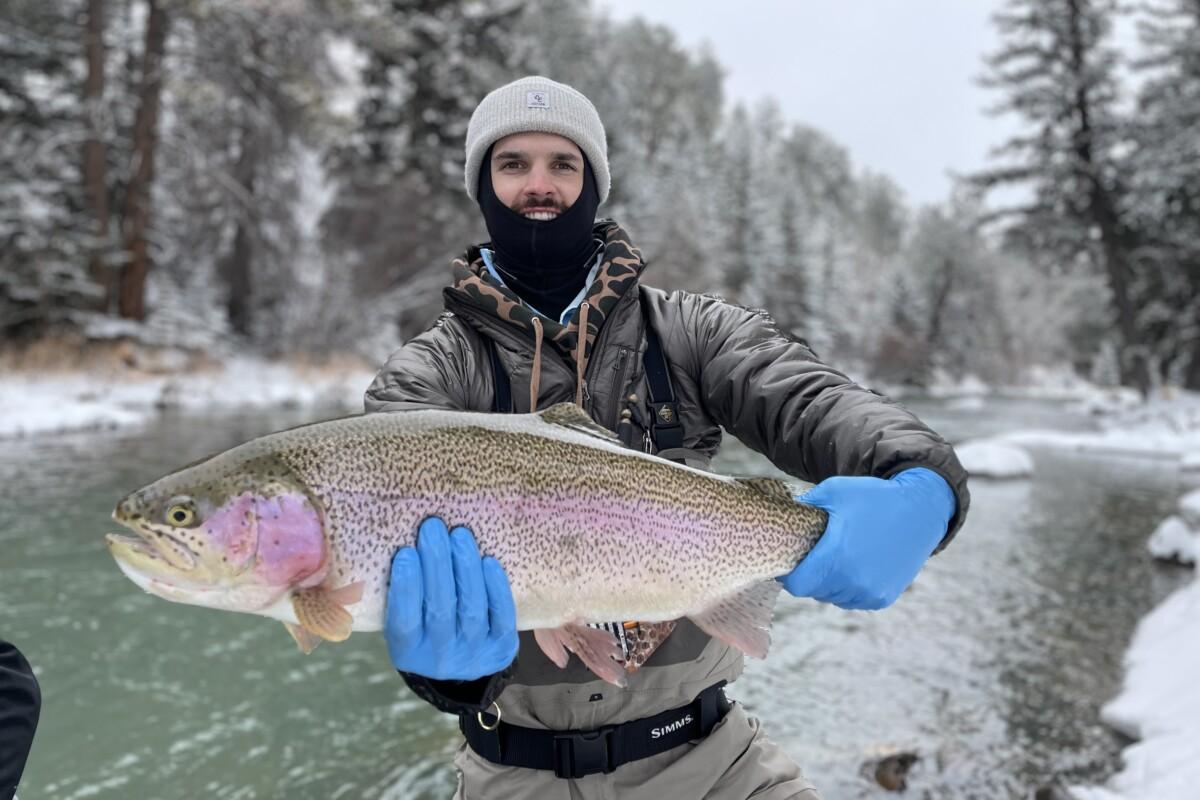Winter Fly Fishing in Colorado
While most people picture powder days and chairlifts when imagining Winter in Colorado, we prefer serene rivers and having fish all to ourselves. Winter fly fishing in Colorado can be broken up into two areas: freestone rivers, which are not dammed or flow controlled, and tailwaters, which are.
Freestone Rivers
Freestone rivers and creeks are quite susceptible to weather patterns, and often experience shelf ice, ice dams, and slush during the coldest parts of the year. While fishing on some of the larger freestones that Colorado offers remains a viable option during the Winter months, fish are often lethargic and anglers need to pick the right days (usually the warmest ones) to find consistent success. Anglers fly fishing freestone rivers in the Winter will almost exclusively be fishing subsurface nymph rigs, and should focus on the deepest runs where fish will often congregate in search of shelter, oxygenated water, and more prevalent bug life.
Tailwaters
Conversely, the outflow controlled nature of tailwaters means that they are much less likely to suffer from ice buildup or extremely cold water temperatures. These more consistent water levels and temperatures often translate to more active fish and better all-around fly fishing conditions. In fact, several Colorado tailwaters such as the South Platte, Frying Pan, and Blue rivers are famed for their Winter fly fishing specifically. Winter is a great time to fish these Colorado tailwaters because they receive far less pressure than the busy Summer months, making these often educated fish a little more willing to eat. Low, clear Winter flows often allow anglers to sight fish to the large trout these tailwaters have to offer using very small midge and mayfly nymphs on light line. Winter fly fishing Colorado’s tailwaters can be an exercise in patience and persistence, but few things are more rewarding than tricking a well-versed trophy trout under a blanket of snow.
FAQ's

